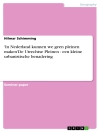Currently there are more than 125 Chinese cities with a population exceeding one million. The unprecedented urban growth in China presents a crucial development for studies on globalization and urban transformation. This concise and engaging book examines the past trajectories, present conditions, and future prospects of Chinese urbanization, by investigating five key themes — governance, migration, landscape, inequality, and cultural economy.
Based on a comprehensive evaluation of the literature and original research materials, Ren offers a critical account of the Chinese urban condition after the first decade of the twenty-first century. She argues that the urban-rural dichotomy that was artificially constructed under socialism is no longer a meaningful lens for analyses and that Chinese cities have become strategic sites for reassembling citizenship rights for both urban residents and rural migrants.
The book is essential reading for students and scholars of urban and development studies with a focus on China, and all interested in understanding the relationship between state, capitalism, and urbanization in the global context.
Содержание
Figures and Tables viii
Map ix
Chronology x
Preface xiii
1 China Urbanized 1
2 Governance 32
3 Landscape 86
4 Migration 116
5 Inequality 145
6 Cultural Economy 170
Conclusion 191
Notes 197
Bibliography 203
Index 215
Об авторе
Xuefei Ren is assistant professor of sociology and global urban studies at Michigan State University and a fellow at the Woodrow Wilson International Center for Scholars.












